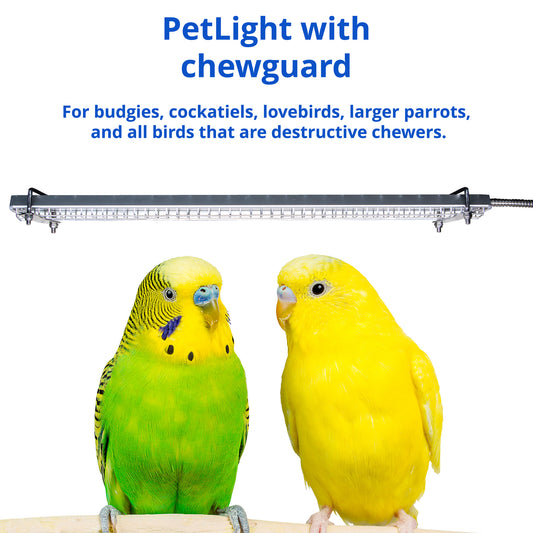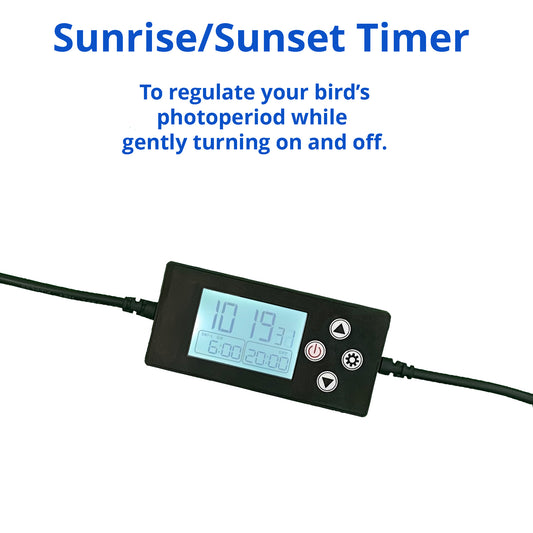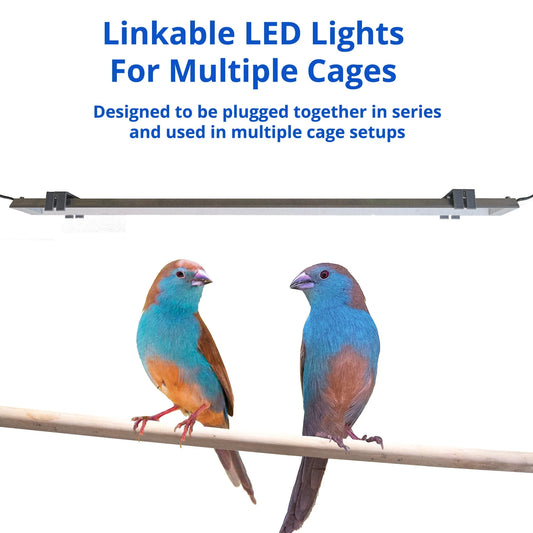Why Reptile Lamps Aren’t Right for Birds - And What to Use Instead
Share
 When shopping for lighting for your bird, it’s easy to come across reptile bulbs repackaged and sold as lights for birds. These products may look similar on the shelf, but don’t be fooled. Lamps designed for reptiles are made for completely different animals and environments.
When shopping for lighting for your bird, it’s easy to come across reptile bulbs repackaged and sold as lights for birds. These products may look similar on the shelf, but don’t be fooled. Lamps designed for reptiles are made for completely different animals and environments.
Here’s why reptile lighting isn’t suitable for birds — and what makes a better alternative.
Lighting Indoors: Birds vs. Reptiles
While UVB from the sun benefits a bird by creating vitamin D3, artificial UVB has never been proven to do this. Artificial light benefits a bird by regulating their day/night rhythm, hormones, and providing a much more natural environment.
Reptiles, on the other hand, are cold-blooded and require different wavelengths — including UVB — to support thermoregulation and behavior. Their lighting tends to be more intense, targeted, and UV-heavy.
Using reptile lights for birds introduces a mismatch in purpose, spectrum, and safety.
Why UVB and Flicker Aren’t for Birds Indoors
Many reptile lamps emit artificial UVB — and flicker.
While UVB is naturally present in sunlight, its artificial counterpart is not recommended indoors. Scientific studies have shown that a bird’s eyes are sensitive to UVB and can suffer damage from exposure.
What birds benefit from indoors is not UVB, but quality visible light in a controlled and bird-safe setup.
Bird Lighting Should Focus on the Visible Spectrum
What matters most for indoor birds is a full, rich spectrum of visible light. That means:
- Broad-spectrum light (without UVB)
- Consistent daily cycles (10–12 hours)
- Flicker-free operation (critical for avian vision)
- Bright, cage-specific lighting — not just ambient room light
Reptile lights often emphasize isolated wavelengths — like blue or UV — and lack the balanced light birds need.
Why Mounting and Voltage Matter
Another crucial difference lies in the practical setup.
Reptile lights are typically high-voltage and designed to mount outside large enclosures. This doesn’t work for bird cages, where secure, low-voltage setups are essential.
HappyBird lights, for example, run on low-voltage (24VDC) wiring to reduce risk from cable chewing. The cables are protected by a stainless steel conduit for additional safety, and the lights mount directly to the cage, ensuring illumination reaches the bird’s environment without waste or hazard.
Not All “Full Spectrum” Lights Are Alike
Some household or pet-store lights claim to be “full spectrum,” but may still include UVB, flicker, or color temperatures intended for reptiles or plants.
Birds need lighting designed specifically for them — lighting that delivers:
- Rich visible light without UVB
- Safe, flicker-free performance
- Easy, secure cage mounting
- 10–12 hours of consistent daily exposure
Reptile lamps might seem similar at first glance — but in terms of spectrum, safety, and design, they don’t belong in a bird’s environment.
Choose lighting that fits your bird’s natural rhythm — not another species’.



